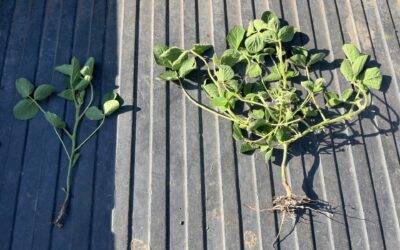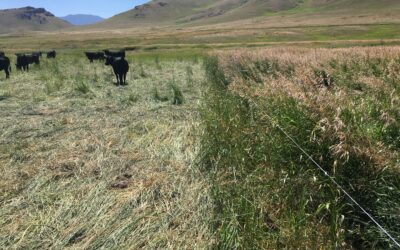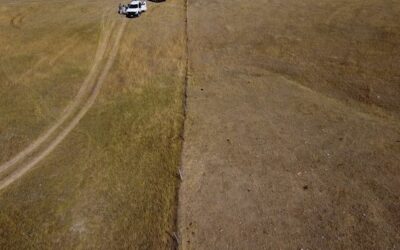Macro Fauna
Nematodes:
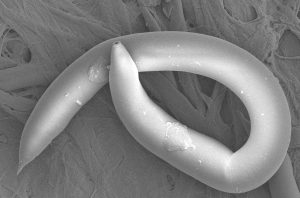 While the most well‐known nematodes are pests occupying and feeding on plant roots (such as the lesion nematode and the soybean cyst nematode), in fact most nematodes are beneficial organisms. Nematodes are extremely important because they consume a diverse array of food sources, which places them at multiple trophic levels in the soil food web. Nematodes are mostly microscopic and occupy water pores in soil but also rely on air pores for diffusion. Nematodes are a diverse group of animals and can be found in almost all soil types and climates including Antarctica. Some nematodes consume bacteria and others fungi. Like protozoa, nematodes have a role in nitrogen mineralization, disease control of microbes, and root growth stimulation. Still other nematodes are opportunistic or omnivorous and feed on a variety of food sources including protozoa. Specific nematodes are used in biological application to consume the larvae of invertebrate pests (e.g. Japanese beetles). Still other nematodes are specifically predators, feeding exclusively on other nematodes. Due to this nature, scientists use nematodes as biological indicators in soil. Nematode community measures are related to the structure of the entire food web and also reflect both chemical and physical disturbances.
While the most well‐known nematodes are pests occupying and feeding on plant roots (such as the lesion nematode and the soybean cyst nematode), in fact most nematodes are beneficial organisms. Nematodes are extremely important because they consume a diverse array of food sources, which places them at multiple trophic levels in the soil food web. Nematodes are mostly microscopic and occupy water pores in soil but also rely on air pores for diffusion. Nematodes are a diverse group of animals and can be found in almost all soil types and climates including Antarctica. Some nematodes consume bacteria and others fungi. Like protozoa, nematodes have a role in nitrogen mineralization, disease control of microbes, and root growth stimulation. Still other nematodes are opportunistic or omnivorous and feed on a variety of food sources including protozoa. Specific nematodes are used in biological application to consume the larvae of invertebrate pests (e.g. Japanese beetles). Still other nematodes are specifically predators, feeding exclusively on other nematodes. Due to this nature, scientists use nematodes as biological indicators in soil. Nematode community measures are related to the structure of the entire food web and also reflect both chemical and physical disturbances.
Earthworms:
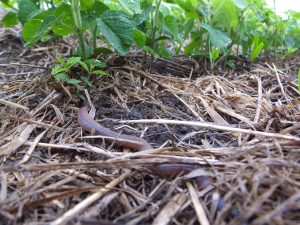 Earthworms have many benefits and are also the easiest indicator of biology because they do not require a microscope for observation. Earthworm burrows create increased soil structure and porosity, and habitat for other soil organisms. Earthworms digest substantial quantities of organic matter, turning it into more available nutrients. Different earthworms occupy different places in the soil profile; therefore earthworm diversity is important in maintaining soil health.
Earthworms have many benefits and are also the easiest indicator of biology because they do not require a microscope for observation. Earthworm burrows create increased soil structure and porosity, and habitat for other soil organisms. Earthworms digest substantial quantities of organic matter, turning it into more available nutrients. Different earthworms occupy different places in the soil profile; therefore earthworm diversity is important in maintaining soil health.
Other Soil Organisms:
Other soil fauna include arthropods, potworms (also called enchytraeids) and water bears (also called tardigrades). Soil arthropods may spend all or only a part of their life in the soil. While some are pests, many are strictly shredders, breaking down plant litter as they feed on microbes, and like earthworms, enhance soil structure with their fecal pellets and burrows. Some also have a role in nitrogen mineralization (e.g., collebolans). Larger, mobile arthropods actually function to move smaller soil organisms around, dispersing them into new settings where they can then assist in decomposition. Potworms are native, somewhat common, small, light colored worms and serve similar functions to earthworms, but affect smaller pore structure. Like nematodes, water bears live in soil water and through a unique kind of suspended metabolism (crytobiosis) can withstand substantial stresses of moisture loss, temperature extremes, high pressure and even the vacuum of space. They feed on plant residues, algae and small invertebrates, playing a role in nutrient turnover.
How Management Practices Can Impact & Enhance Soil Biota:
The great news is that the actions we take to remediate phosphorus pollution or enhance nitrogen uptake can also benefit soil biology. Both physical and chemical disturbances can affect the abundance and diversity of soil organisms, and in particular soil fauna that are higher up on the food web. The complexity and type of a soil food web can vary substantially from one soil and management practice to another. Generally speaking agricultural soils tend to have a greater population of bacteria, and therefore more soil organisms that feed on bacteria, in comparison to forest soils, which tend to have a greater number of fungi and soil organisms that feed on fungi. However, within agricultural soils, management practices can shift the dynamics of the soil food web over time in either direction. Complexity is an important concept in studying soil biology, because it relates to how many kinds and groups of organisms there are. More complex and diverse food webs usually confer more benefits to plants.
Increasing quantity and complexity of soil habitat and food sources and maintaining water‐air balance generally increases biological complexity. For example, providing a diverse array of food sources from organic matter applications, plant rotations and cover crops allows for more diversity in soil biota that feed on the organic matter. Similarly, decreasing compaction and increasing soil structure encourages soil biota. This is both due to increased water infiltration and to diversity in soil pores – allowing for a range of pore sizes that support a range of soil biota. Owing to the fact that soil organisms are so tiny and soil is complex, physical space is a really important piece of maintaining soil biology. Places of high biological activity in soil are mainly near plant roots, in plant litter and earthworm and arthropod burrows. Therefore, increasing soil quality for root growth development can also benefit soil biota. Also, if your soils are permanently saturated only anaerobic organisms‐ those that do not need oxygen to survive – will be able to live there. This is important for nitrogen cycling because if affects how well nitrogen is mineralized. Many organisms, including nematodes, live in water films; if you have a soil that is in serious drought conditions on a regular basis, many will die, or go into a kind of temporary stasis until more water is available. Soil organisms can also be sensitive to chemical disturbances and low pH to differing degrees by species; however earthworms and other soil animals are usually more sensitive.
While tillage can lead to a bloom of soil activity as organic matter is incorporated into the soil, this activity is generally bacterial in nature and short lived. Every time you till the soil, you are shifting back the soil community either by direct damage or by homogenization of the habitat. Reducing tillage can have positive effects on biology and in particular fungi and larger animals. Reducing tillage leaves more roots intact, and allows more stable, slowly decomposing organic matter and physical structure to develop through time. While a no‐till system might not be ideal or practical in all farming situations, reduction and better management of tillage can benefit soil biology. Research has suggested that reducing tillage and increasing plant residues may be a mechanism for suppression of plant disease by supporting a complex food web with organisms that compete with or control the pest of concern.
In summary:
Practices that increase quantity and quality of organic matter and physical habitat have beneficial impacts on soil biota. A diverse array of foods and habitats generally leads to a more complex and stable food web. Supply diverse organic matter – which provides both food and habitat for soil biota. Practices that increase diversity of food sources, encourage beneficial biota, and interrupt pest cycles include:
- applying compost & manure
- planting cover crops and legumes (consider inoculation)
- crop rotation
- planting a diversity of crops or forages
- maximizing plant residues
- reducing tillage
Protect the soil habitat. Soil organisms need space to live, and they need a balance of air & water. Soil organisms also need intact root structures. Practices that can preserve and improve soil habitat include:
- minimizing compaction
- reducing tillage
- improving drainage (in wet soils) or supplying moisture or cover (in dry soils)
- minimizing/managing pesticides & inorganic fertilizer use (IPM & NMP)
- optimizing pH (as with agronomic crops)
- managing grazing to increase plant root biomass
Developing healthy soil biota in your soil is a feedback process on your farm. When conditions are more favorable for soil biota they will begin to sustain and enhance their own habitat and provide conditions more conducive to other organisms. The long term biological goals on agricultural soils would be to establish a set of management practices that maintain a semi‐stable condition for soil biota, so that the community is less affected by more extreme conditions that farmers cannot control – like a drought or flood. Management would focus first on the farm or field specific soil properties that are most limiting for soil biota. A healthy soil community – just like a healthy agricultural community – will be more capable of bouncing back from a disturbance than one that is already highly stressed before the disturbance occurs.
This Page Was Created Utilizing Text And Images From These Sources:
UVM Extension Fact Sheet, The Living Breathing Soil: Farming With Soil Biology
Natural Resources Conservation Service Soil Health Campaign Flickr Account
Photo Credit: USDA-ARS, Electron & Confocal Microscopy Unit, Beltsville, MD USA
South Dakota Natural Resources Conservation Service Flickr Account
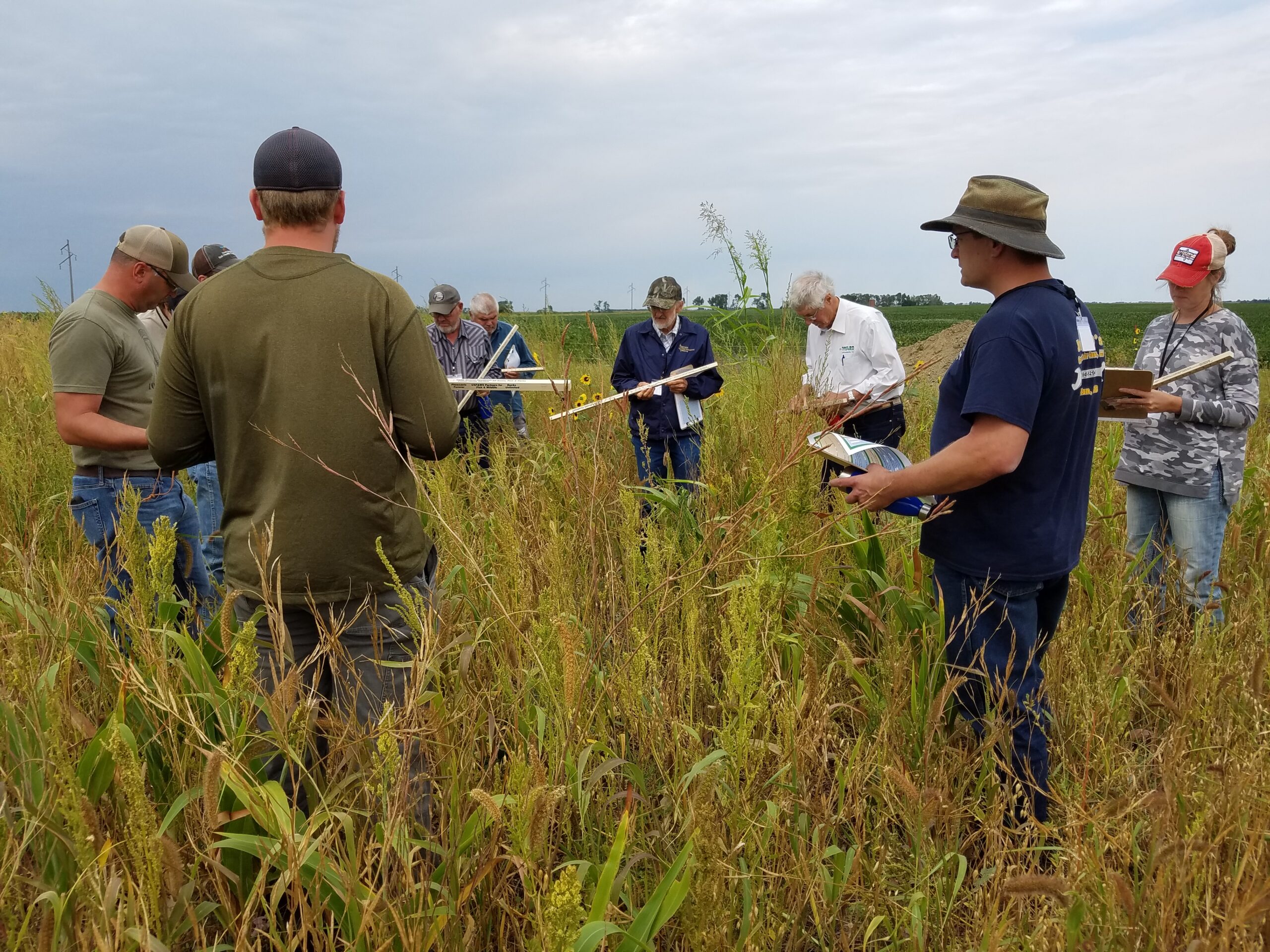
West River Soil Health School Registration Open!
In 2024, the South Dakota Soil Health Coalition will host an additional Soil Health School in west of the Missouri River! The 2024 West River Soil Health School with be held June 26-27 near Caputa, SD! This school will focus on issues specific to the land, climate, and ag production systems of wester South Dakota. Class size is limited, so early registration is strongly encouraged!
News & Events
Farmer reaps higher yields by interseeding soybeans
By Stan Wise Alex Frasier has spent a lot of time studying what it takes to grow a successful crop. After studying ag production and precision technology at Lake Area Technical College, he has worked in ag retail and currently works as an agronomist in Aberdeen, SD....
Farm and ranch innovators to share new ideas at Soil Health Conference
By Stan Wise PIERRE, SD — Before Cooper Hibbard came home to manage his family’s ranch, he studied ag business, rangeland resources and Spanish at California Polytechnic State University and then worked on ranches all over the world. That education and experience...
Wintertime is decision time
By Stan Wise PIERRE, SD – It’s often said that the best time to start improving your land was 20 years ago, but the second-best time is right now. That statement might be harder for ranchers to swallow with winter on their doorstep, nothing growing in their pastures,...
